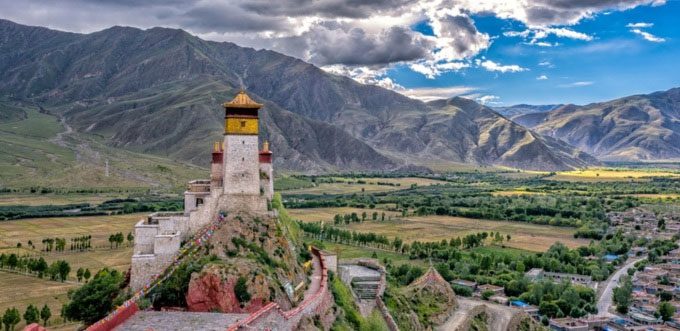The changes in temperature and rainfall over the past 200 years have closely influenced the survival of the Kingdom of Tubo on the Tibetan Plateau.
The Tibetan Plateau is one of the highest inhabited regions on Earth. Despite the harsh environment of the “Roof of the World”, new data reveals that this area once experienced warmer weather, leading to the rise of the powerful Tubo Kingdom, also known as Greater Tubo. However, despite its enormous influence on Asian geopolitics between the 7th and 9th centuries, this kingdom collapsed after about 60 years due to cold temperatures and severe droughts that reduced agricultural resources across the region, according to research published in the Science Bulletin.

Tubo prospered between the 7th and 9th centuries. (Photo: Now Boarding)
To further understand the impact of climate change on the formation and collapse of Tubo, a team of experts from the Tibetan Plateau Research Institute analyzed carbonate and oxygen isotopes in sediment layers collected from Jiang Co Lake in the heart of the Tibetan Plateau. By combining this with biological traces left by ancient algae, they were able to reconstruct temperature and rainfall data for the past 2,000 years.
Through this, researchers discovered that summer temperatures from 600 to 800 AD were approximately 2 degrees Celsius warmer compared to both the preceding and following cold periods. Additionally, changes in the depth and size of the lake indicated that the warm weather corresponded with an increase in rainfall. These factors made the region much more suitable for agriculture and livestock farming.
The warm and humid climate from 600 to 800 AD coincided with the most prosperous period for Tubo. During this time, the research team estimated that the land suitable for barley cultivation increased by 24.48%. The expansion of agriculture, livestock farming, and the accumulation of surplus resources could have laid the groundwork for social class divisions and the emergence of dynasties, enabling Tubo to expand throughout the plateau and surrounding areas.
By comparing weather data with historical sources, the research team found that Tubo tended to invade neighboring territories during particularly warm and humid years, while enemies often retaliated during colder, drier periods. This indicates that the Tubo people relied on resources from livestock and agriculture to promote military activities during wet periods.
The rulers of Tubo also frequently sought alliances with other powers when resources were dwindling, demonstrating their desire to mitigate the negative impacts of climate change. Throughout its 200-year existence, the kingdom conquered many regions in Xinjiang and Kashmir. However, after reaching its peak around 800 AD, the kingdom suddenly declined as conditions on the Tibetan Plateau rapidly worsened.
From the late 8th century to the mid-9th century, rainfall decreased significantly, and several droughts ravaged the region for about 60 years. The peak of the drought in 840 AD coincided with the collapse of Tubo. During this period, the land available for barley cultivation decreased by 10.88 million hectares. Combined with religious conflicts, the decline in agricultural resources led to increased warfare among various tribes, accelerating the disintegration of the kingdom.





















































